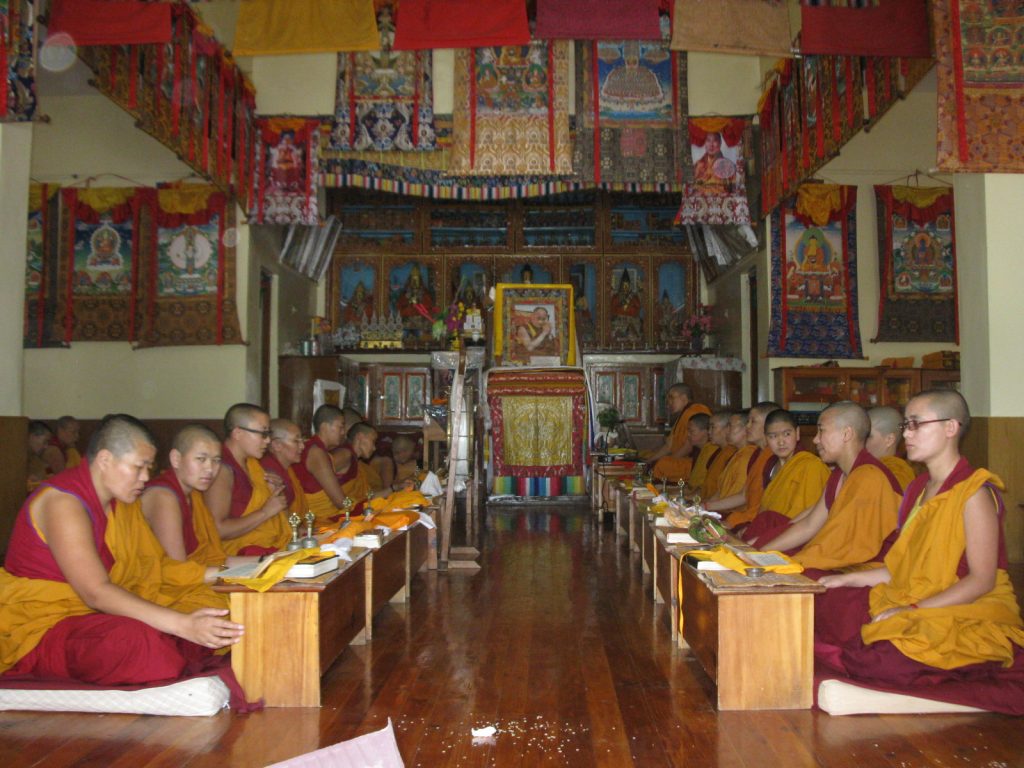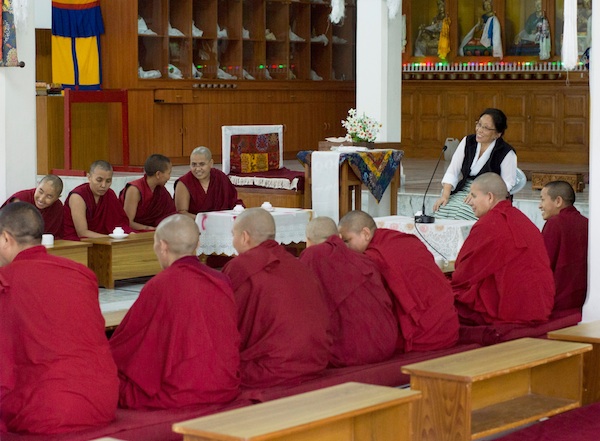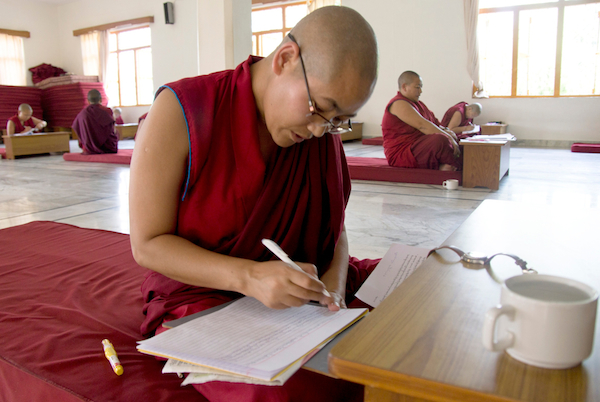Education is the Key
The Tibetan Nuns Project believes that education is the key to empowerment. We seek to give Tibetan Buddhist nuns the resources to carve out independent, creative identities for themselves. In this blog post, we’ll explain what and how the nuns study and give an outline of their degrees and curriculum.
Through all its work, the Tibetan Nuns Project is strengthening Tibet’s unique religion and culture — both under great threat due to the occupation of Tibet — by educating and empowering women. These dedicated women were previously denied equal access to education and the opportunity in Tibet to freely and safely practice their faith. The nuns are an integral part of the spiritual roots of the society and are teachers and leaders of the future.
Starting from Scratch
When the Tibetan Nuns Project was founded in 1987 in response to many nuns escaping from Tibet to India, most of the newly arrived nuns had no education in their language. Many were illiterate and were unable even to write their names. While in Tibet they had also been denied education in their religious heritage.

An outside classroom in the early days of the Tibetan Nuns Project. TNP had to create an education program for the nuns from the ground up.
The Tibetan Nuns Project has created a groundbreaking education system aimed at both preserving Tibetan culture and equipping and empowering these women to live and become leaders in the modern world.
The Tibetan Nuns Project aims:
– To combine traditional religious studies with the best of a modern education
– To preserve Tibet’s rich culture and religion through giving ordained Buddhist women educational opportunities
– To elevate the educational standards and the position of women within the monastic community.
– To prepare the nuns for positions of leadership and moral authority in a culture that is going through a very challenging transition
– To support a number of nuns who opt to live in meditative retreat rather than in a nunnery.
The Tibetan Nuns Project also serves women from the remote and impoverished border areas of India such as Ladakh, Zanskar, Spiti, and Arunachal Pradesh. The women and girls from these areas have traditionally been given far less education than the men and boys and were often removed from school as early as Grade 4 if they were sent to school at all. Our programs give them a chance for education that they would not have otherwise.

Photos by Olivier Adam showing girls receiving education at nunneries supported by TNP in the remote Spiti Valley (top) and Zanskar (bottom). Girls and women in these regions lack equal access to education.
Since the Tibetan Nuns Project was founded in 1987, many nuns have been educated and have assumed leadership roles in their community, such as teachers in Tibetan schools, instructors for other nuns, health care providers and other roles serving the Tibetan-exile community. Thanks in part to consistent effort from the Tibetan Nuns Project, for the first time in Tibetan history, nuns are now receiving educational opportunities previously available only to monks.
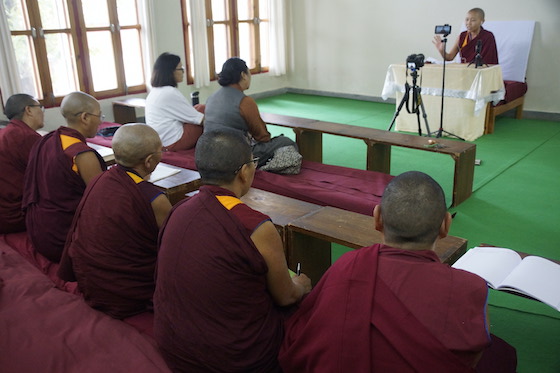
In May 2023, Geshema Delek Wangmo (shown) and Geshema Tenzin Kunsel gave online teaching via Facebook Live with help from two Dolma Ling media nuns. Geshemas from other nunneries also attended to learn how to deliver such basic philosophical knowledge to the lay community. Photo courtesy of the Dolma Ling Media Nuns.
Another goal of the Tibetan Nuns Project is to empower nuns to teach Buddhist philosophy in nunneries and schools. To do this, the nuns must achieve equal academic standing with the monks, proving their qualifications by earning the highest degrees. For monks, depending on their tradition, these degrees are called the Geshe or Khenpo degrees; for nuns, the equivalents are the Geshema or Khenmo degrees.
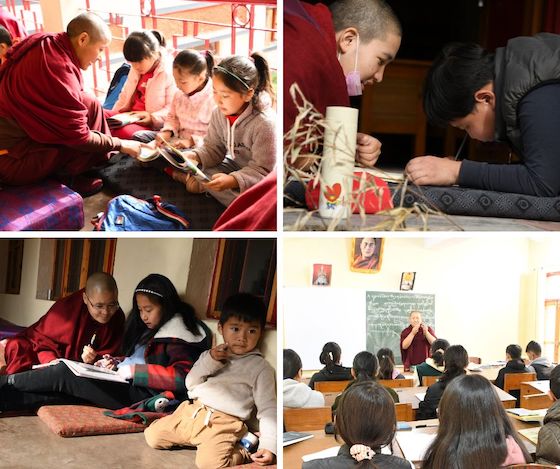
Wisdom and compassion. The Geshemas at Dolma Ling teach Tibetan refugee children during the children’s school holidays. Photos by the Dolma Ling Media Nuns.
The Curriculum
The education program varies by nunnery but the nuns have been introduced to a systematic form of education in their respective nunneries. Though their core subject is Buddhist philosophy they have also been equally educated in Tibetan and English languages since the very beginning. The nuns have built up a strong foundation in Tibetan language over the years.
The curriculum at the nunneries is divided into two parts: (1) secular subjects such as the Tibetan language, Tibetan history, English, social sciences, mathematics, and science and (2) monastic education. The nuns have quizzes and exams and are now able to proceed through a degree-granting program. If the nuns are very young as may be the case in the very remote nunneries, they do not receive teaching in philosophy, but rather a basic education in subjects like reading, writing, and arithmetic. Once that is established a more robust curriculum is used.
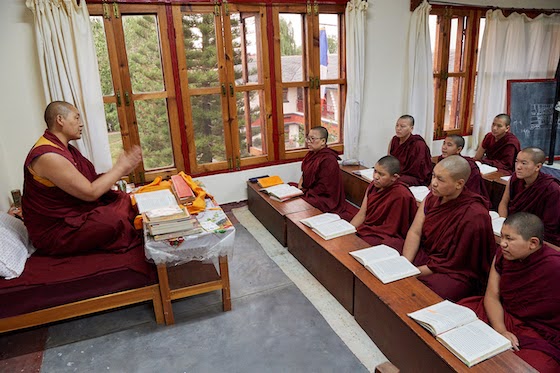
Geshema Tenzin Kunsel teaching Tibetan Buddhist nuns at Dolma Ling Nunnery. Photo by Olivier Adam
Most courses take place in classrooms, much as in a school, except for the practice of monastic debate, which takes place in the open air. As part of their monastic education the nuns are also instructed in the performance of ritual music, the creation of butter sculptures, and other Tibetan Buddhist ritual arts.
The curriculum of the nunneries varies depending on which of the four main schools of Tibetan Buddhism the nunnery follows:
– Nyingma (founded in the 8th century)
– Kagyu (founded in the early 11th century)
– Sakya (founded in 1073)
– Gelug (founded in 1409)
The Tibetan Nuns Project supports nuns from all four traditions.
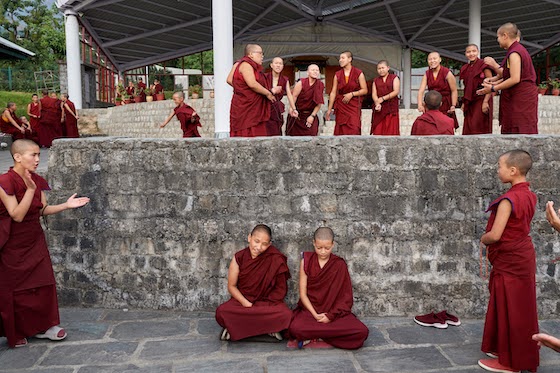
Tibetan Buddhist nuns practice monastic debate each day at Dolma Ling Nunnery and Institute. Through debate, nuns and monks test and consolidate their classroom learning and gain a thorough understanding of the Buddhist teachings. Photo by Olivier Adam.
The Gelukpa monastic curriculum in Dolma Ling for example is as follows:
Preliminary studies: 4 years
Perfection of Wisdom: 7 years
Middle Path: 3 years
Phenomenology or “meta-doctrine”: 3 years
Monastic discipline: 1 year
After about ten years, the nuns receive a first diploma called Parchin which is equivalent to a BA and allows the students who so desire to continue to higher studies. The Geshema degree is the highest level of training in the Gelugpa tradition and is equivalent to a PhD in Tibetan Buddhism. The degree was only formally opened to women in 2012 thanks to the work of the Tibetan Nuns Project.
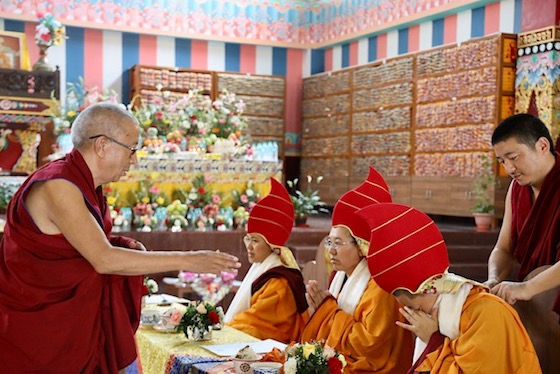
In 2022, Tibetan Buddhist nuns made history as the first group of Khenmos were enthroned at Sakya College for Nuns. The Khenmo degree for nuns, like the Khenpo degree for males, is roughly equivalent to a PhD. In the Nyingma, Kagyu, and Sakya traditions, the title is awarded usually after 13 years of intensive post-secondary study. The comparable title in the Gelug and Bon lineages is Geshe or, for nuns, Geshema.
In the Nyingma, Kagyu, and Sakya traditions, the Khenmo degree for nuns, like the Khenpo degree for males, is roughly equivalent to a PhD. This title is awarded usually after 13 years of intensive post-secondary study. A nun who holds the title Khenmo is recognized as a female Buddhist teacher/scholar who can give official and high-level teachings to nuns.
Reacing the highest degrees in the monastic curriculum takes between 20 and 25 years. Our goal is to support nuns’ education and to enable them to progress to higher degrees such as the Geshema and Khenmo degrees if they so wish.
Thank you for supporting the Tibetan Nuns Project and educating and empowering Tibetan Buddhist nuns!


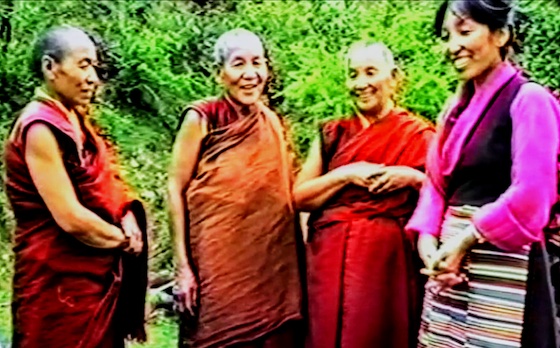
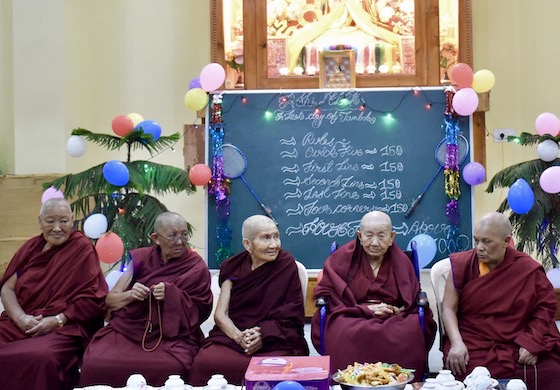
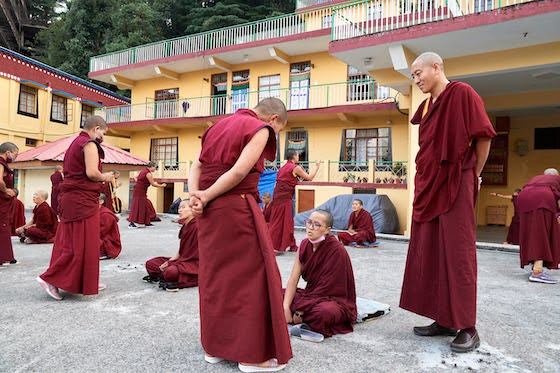
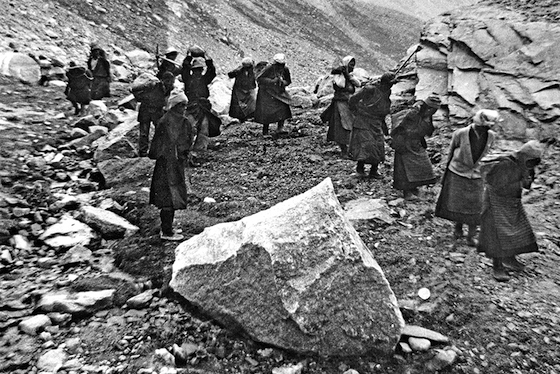

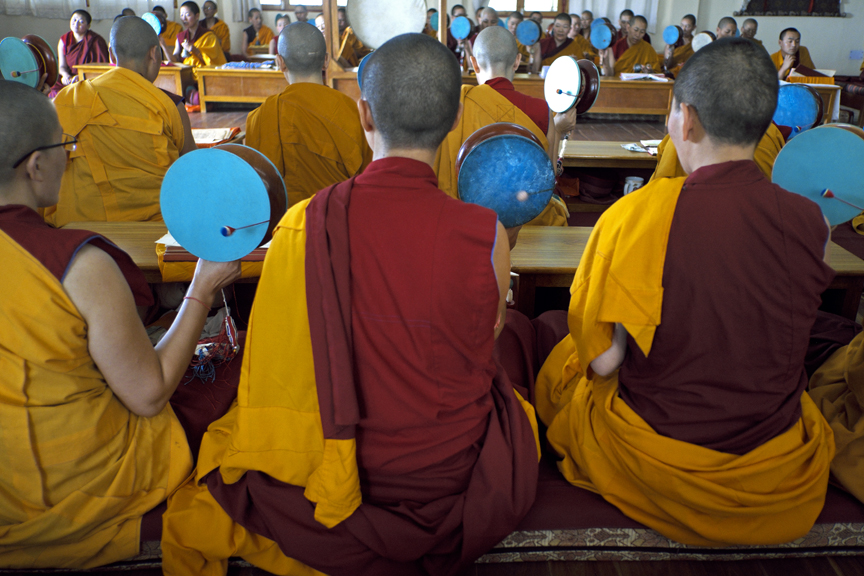
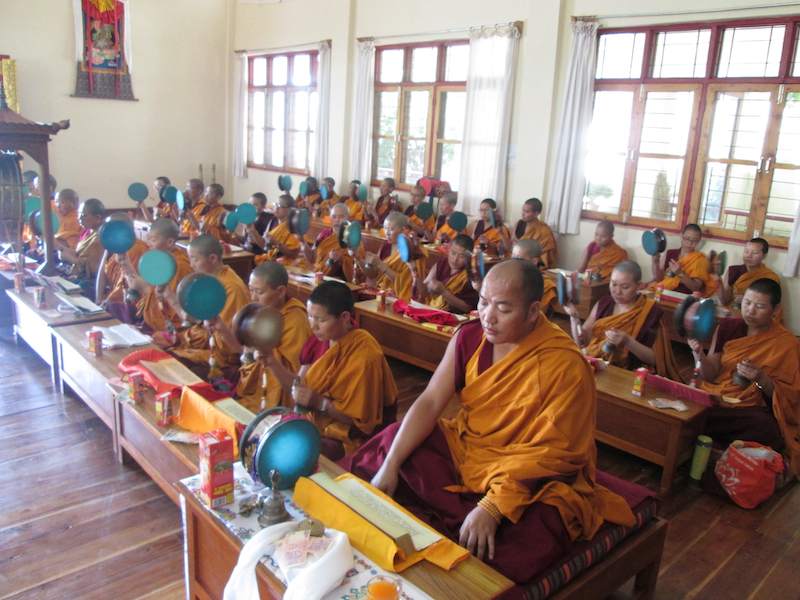
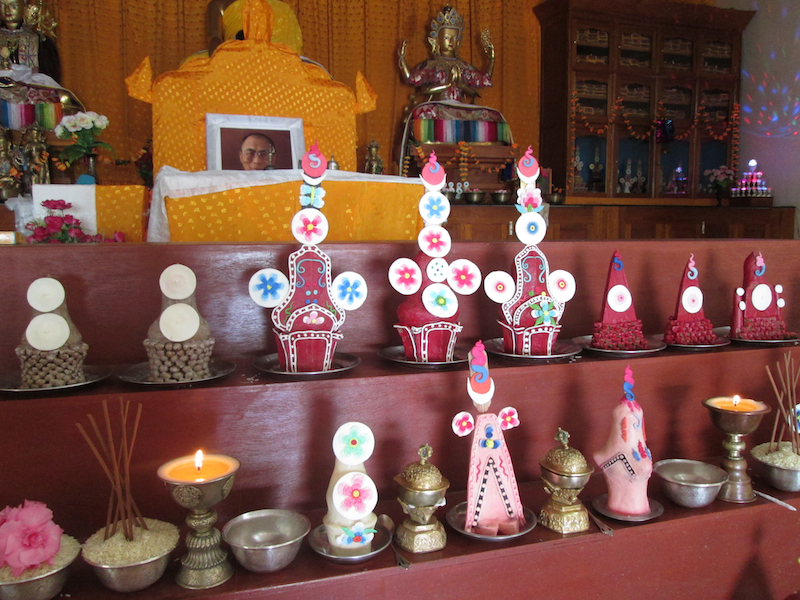
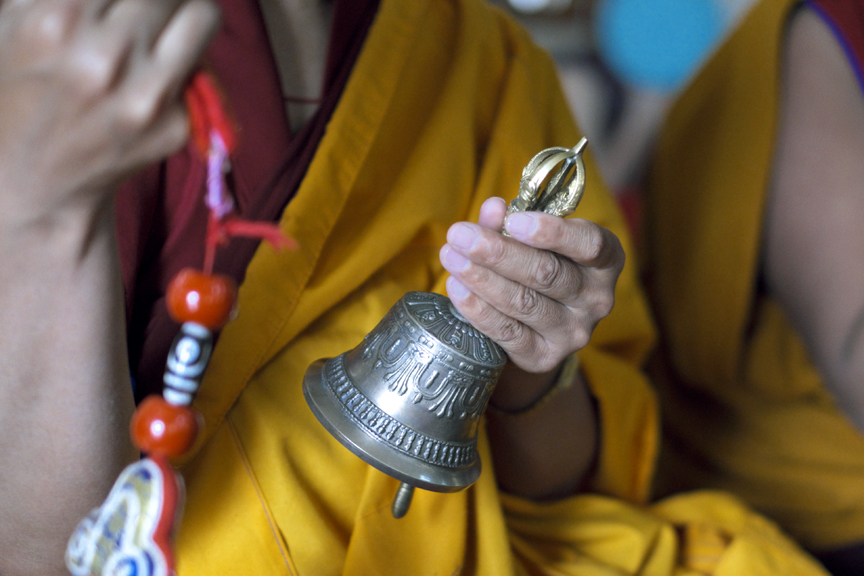
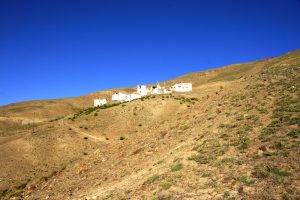 In August 2015, we travelled for three days over rough, bumpy roads from Leh in Ladakh to Zanskar, a remote area in northern India. Located in this majestic, arid landscape is Dorjee Zong Nunnery, home to 19 nuns.
In August 2015, we travelled for three days over rough, bumpy roads from Leh in Ladakh to Zanskar, a remote area in northern India. Located in this majestic, arid landscape is Dorjee Zong Nunnery, home to 19 nuns.
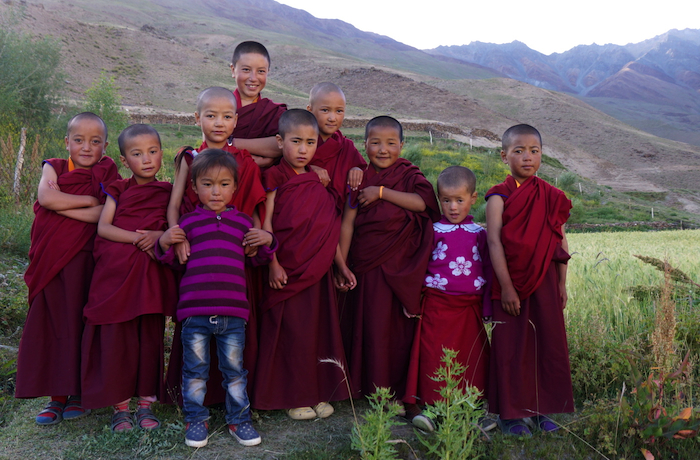
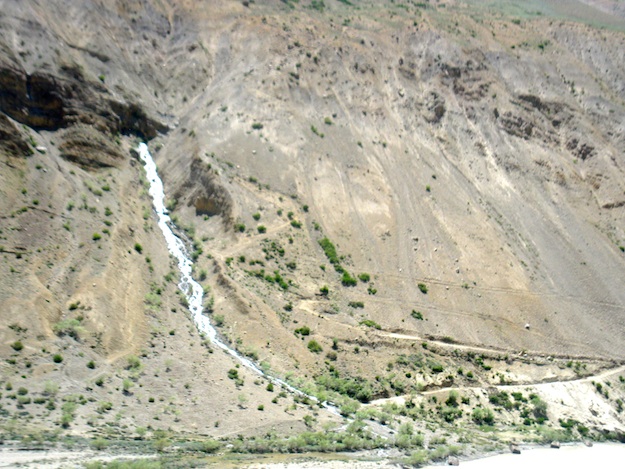

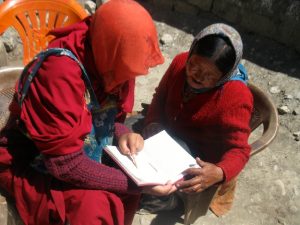
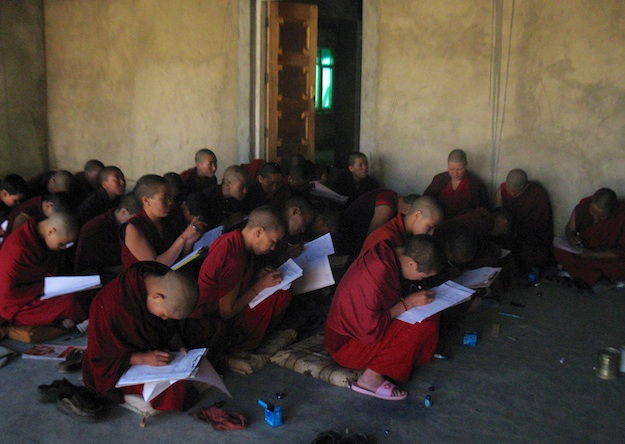

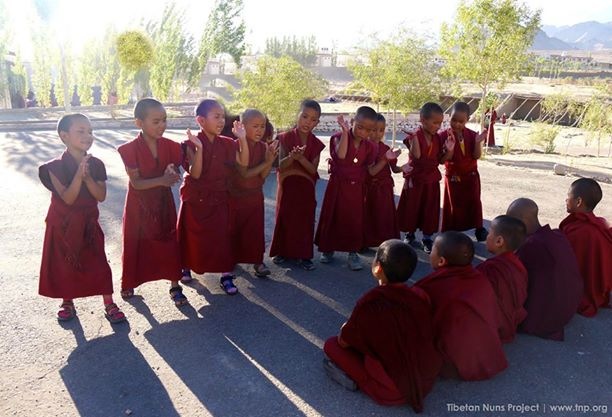
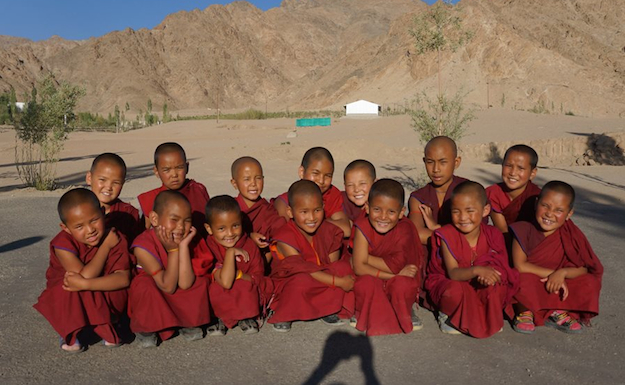
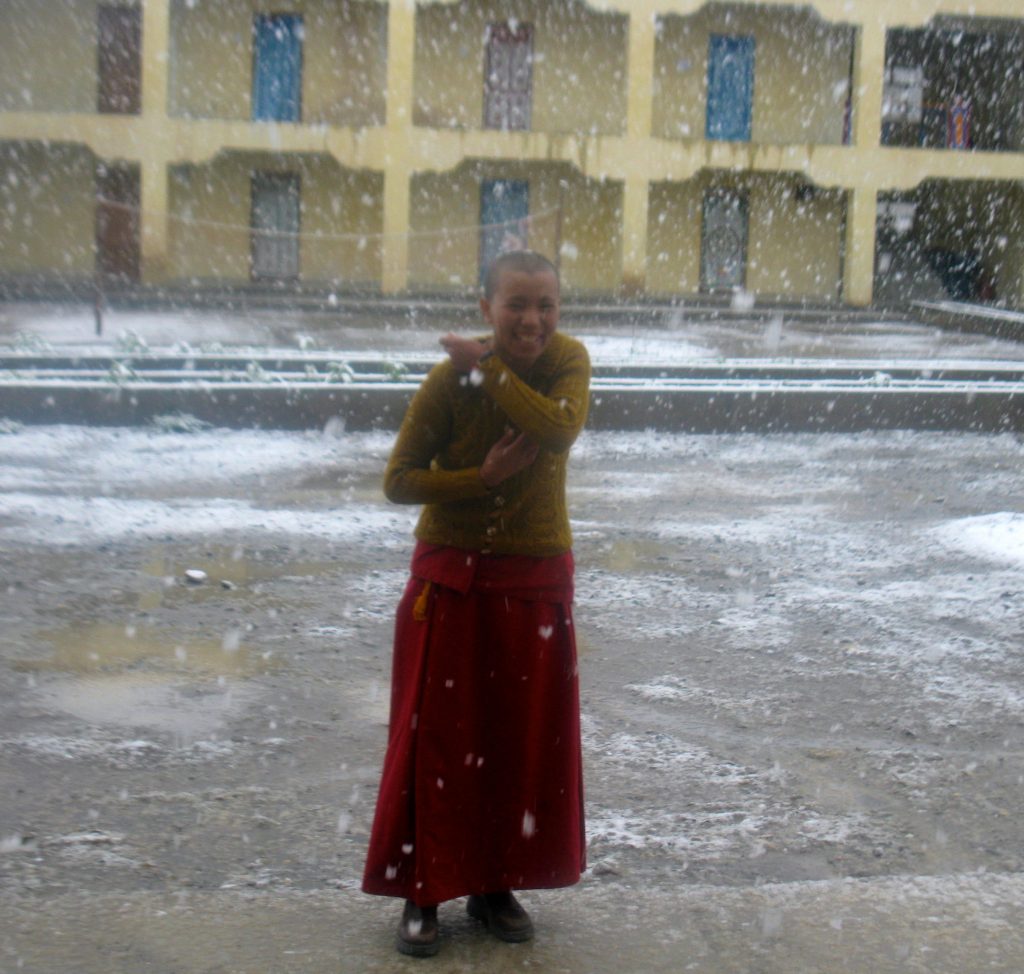

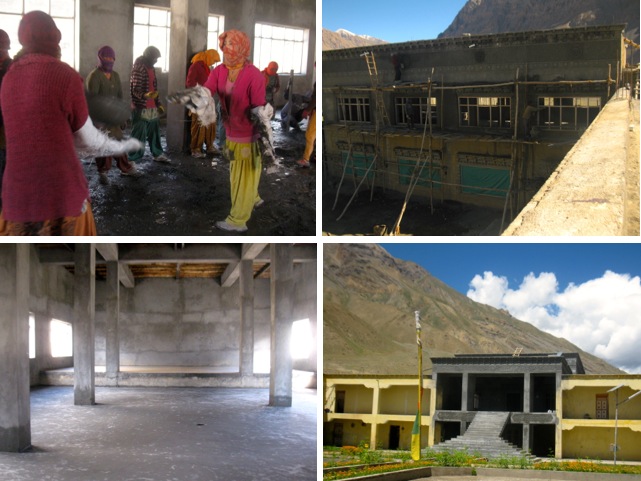
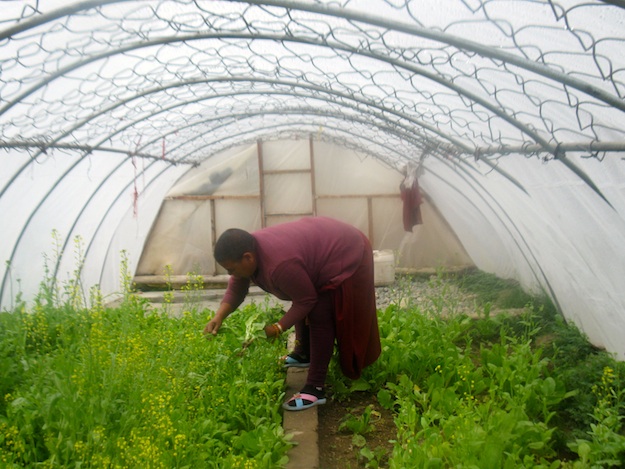
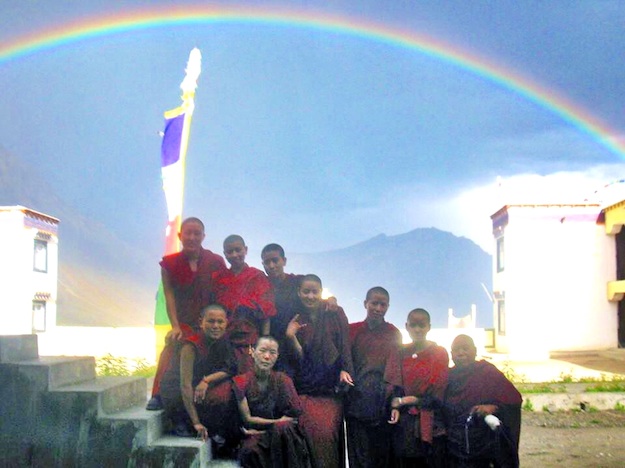
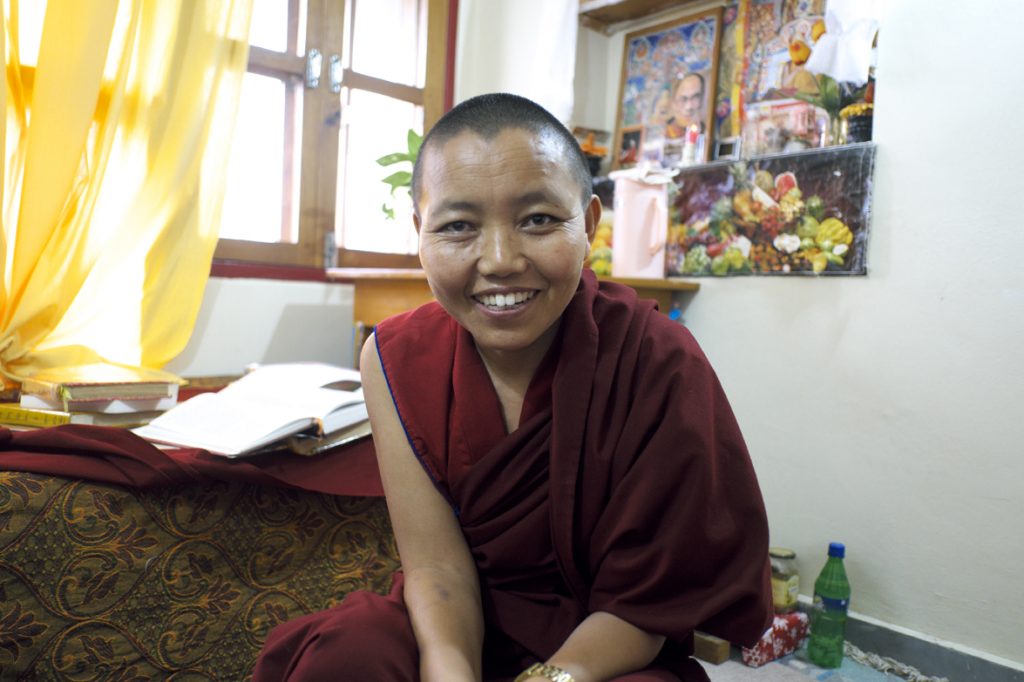

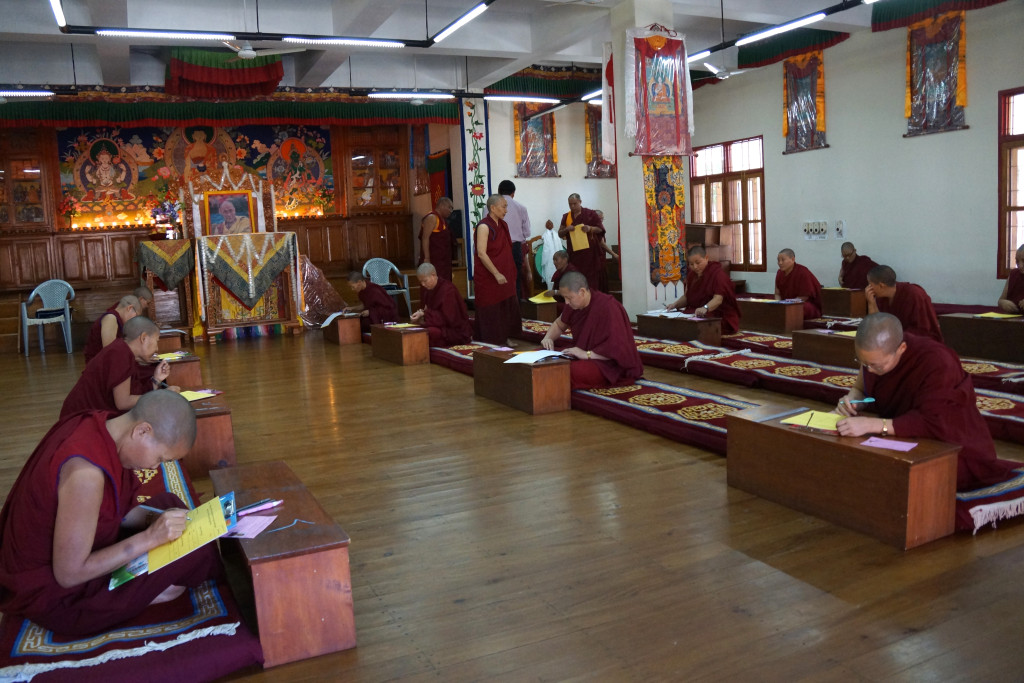 The second round of the Geshema Examinations was held at Dolma Ling Nunnery and Institute from May 1-16, 2014. 23 nuns sat the 2nd year exam, while 6 sat the 1st year exam. The results were released on July 6, His Holiness the Dalai Lama’s Birthday. We are very happy to announce that most of the nuns did very well in their exams; only three nuns failed, one from the 2nd year group and two from 1st year group.
The second round of the Geshema Examinations was held at Dolma Ling Nunnery and Institute from May 1-16, 2014. 23 nuns sat the 2nd year exam, while 6 sat the 1st year exam. The results were released on July 6, His Holiness the Dalai Lama’s Birthday. We are very happy to announce that most of the nuns did very well in their exams; only three nuns failed, one from the 2nd year group and two from 1st year group.